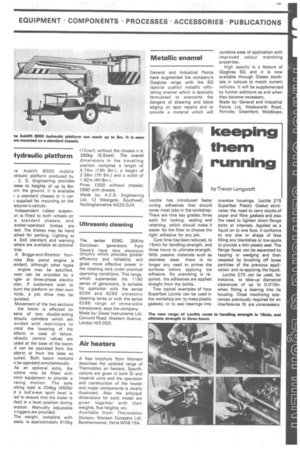keeping them running
Page 71

If you've noticed an error in this article please click here to report it so we can fix it.
by Trevor Long croft
Loctite has introduced faster curing adhesives that should cover most jobs in the workshop. There are nine key grades, three each for locking, sealing and retaining, which should make it easier for the fitter to choose the right adhesive for any job.
Cure time has been reduced, to 15min for handling strength, and three hours to ultimate strength. With passive materials such as stainless steel, there is no longer any need to primer the surfaces before applying the adhesive. No premixing is required, the adhesives are applied straight from the bottle.
Two typical examples of how Superfast Loctite can be used in the workshop are: to make plastic gaskets; or to seal bearings into oversize housings. Loctite 275 Superfast Plastic Gasket eliminates the need to carry stocks of paper and fibre gaskets and also the need to tighten down flange bolts at intervals. Applied as a liquid on to one face, it conforms to any size or shape of face filling any blemishes or low spots to provide a thin plastic seal. The flange faces can be separated by tapping or wedging and then resealed by brushing off loose particles of the previous application and re-applying the liquid.
Loctite 270 can be used, for instance. to take-up diametral clearances of up to 0.010in. when fitting a bearing into its housing. Close machining tolerances previously required for an interference fit are unnecessary.




















































































































